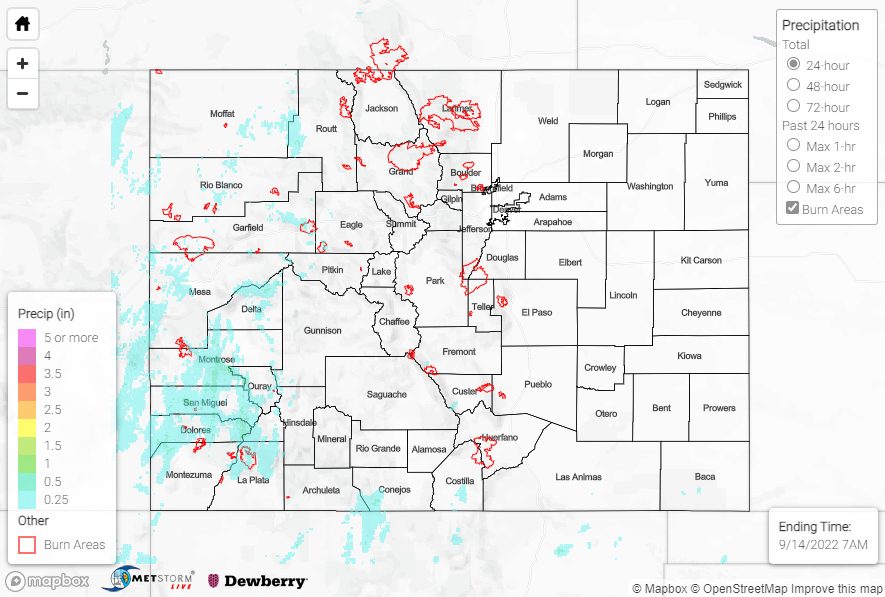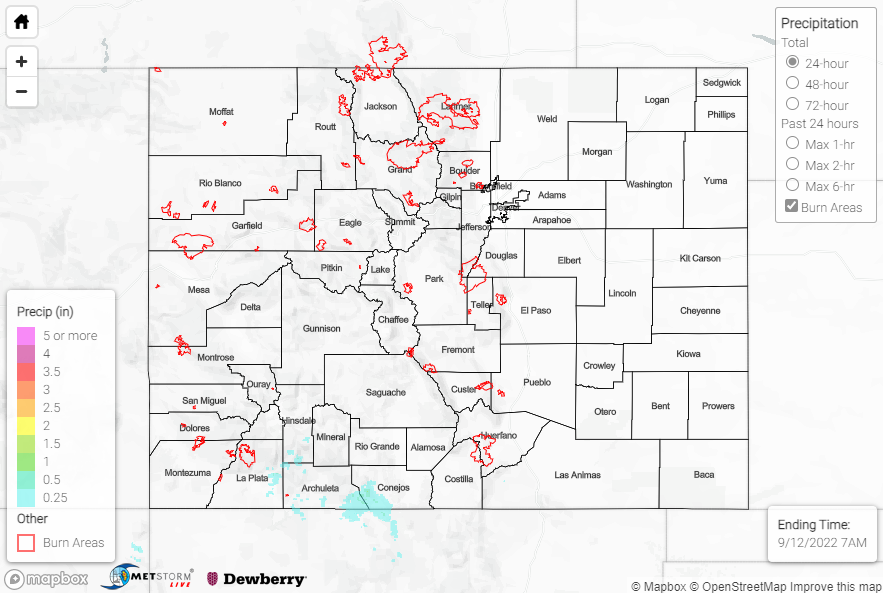Issue Date: Thursday, September 15th, 2022
Issue Time: 11:45 AM MDT
Summary:
The eastern half of Colorado got in on Wednesday’s rain after a dry Tuesday. A shortwave trough emanating from the Four Corners, along with divergence from an upper-level jet streak and much-above-normal precipitable water values, combined to produce widespread showers and storms across the entirety of the state. Rainfall rates were generally light to moderate, although a few pockets of heavier rates were observed at times.
Per QPE data, the heaviest rain fell along the I-70 corridor west of the Divide, particularly in the vicinity of the Grand Valley, where amounts of 1.00-2.00” are suggested. These estimates are confirmed by gauge observations, including the following:
• 1.99” and 1.10” near Glenwood Springs
• 1.45”, 1.41”, and 1.31” west, north, and northeast of Grand Junction, respectively
• 1.32” near Mesa
• 1.03” near Badger Wash
• 0.99” near Battlement Mesa
• 0.97” near Rifle
A Flash Flood Warning was issued for the Grizzly Creek burn scar, but no flooding reports were received. Elsewhere west of the Divide (Northwest/Southwest Slopes, Central/Northern Mountains, San Juan Mountains) amounts were lighter, generally 0.25-0.75”; similar amounts were observed for portions of the Front Range and Urban Corridor, including rain gauge observations of 0.77” and 0.67” south of Denver.
A secondary region of heavy rain fell across portions of the Northeast Plains and Palmer Ridge, particularly in the counties of Lincoln, Kit-Carson, Washington, and Yuma. QPE data here suggests amounts of 1.00-2.00”, although rain gauge observations are sparse and the largest totals received were:
• 0.80” near Cope
• 0.69” near both Liberty and Anton
• 0.54” near Hugo
Farther south across the Southeast Plains, lighter and more isolated amounts of up to 1.00” were observed per QPE data.
No flooding was reported yesterday. For precipitation estimates in our area, check out the map below. Remember, if you observe flooding in your area, you can use the “Report a Flood” page to make a flood report when you can safely do so.



